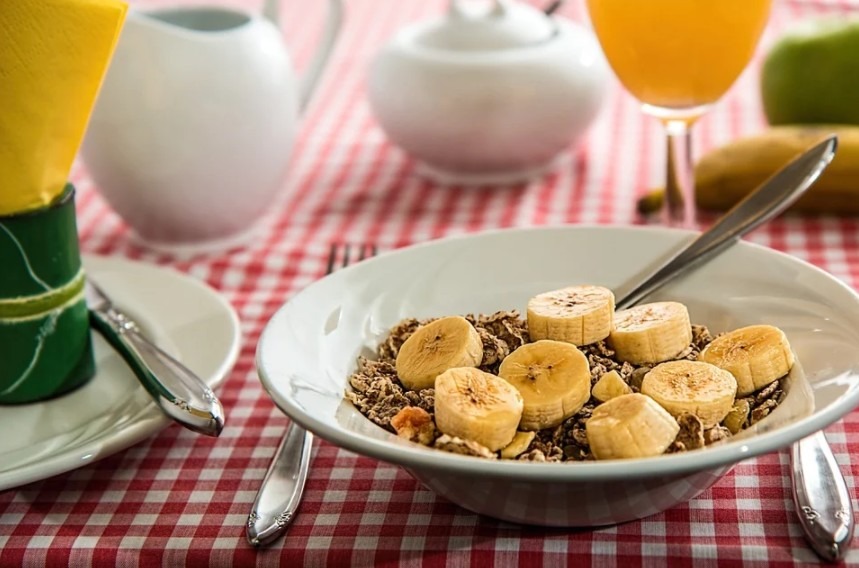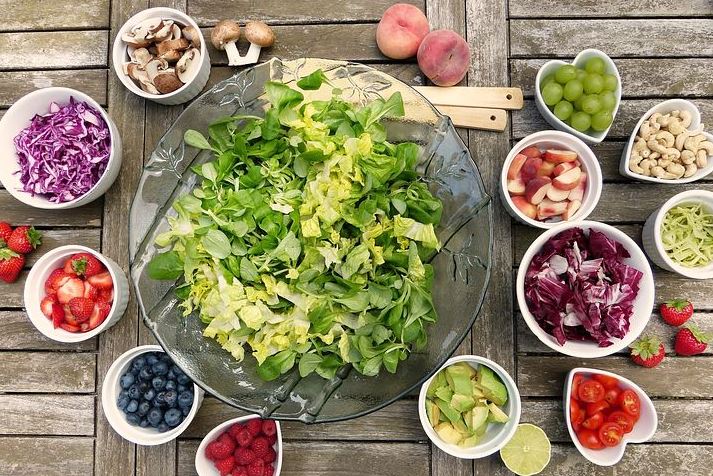For centuries, fiber has been considered an important substance found in fruits and vegetables. To begin with, our digestive system relies on fibers to keep it running normally and prevent problems such as constipation. Once consumed, the fibers help the gut with bowel and stool movements. However, amongst the many benefits, it has to offer, reducing the chances of stroke is one of them.
Over the years, several studies have been conducted to find a direct relation between fibers and stroke risk. Fortunately, researchers have been able to come up with solid findings. Furthermore, fibers are of two types soluble and insoluble. Each type has different benefits to offer. Therefore, let us discuss how specifically fibers help to reduce the risk of stroke and the overall benefits offered to the body.
How Does Fiber Help Reduce The Chances Of Stroke?
According to the American Heart Association, the consumption of fibers tends to decrease the risk of stroke. The more fibers you intake, the less are the chances of a stroke taking place. Fiber usually comes from a plant, which is neither absorbed nor digested by the body. Soluble fibers tend to dissolve with water, whereas insoluble fibers travel into the large intestine.
Previous studies conducted state that fiber helps maintain healthy blood pressure and discourages the growth of bad cholesterol, which otherwise increases the chances of stroke. However, newer studies conducted state that for each gram of fiber your intake, the chances of a stroke reduce by the same ratio as well. For instance, if you were to intake 7 grams of fiber daily, the chances of a stroke occurring reduce by 7% as well.
Fibers are mostly found in abundance in both fruits and vegetables. Prunes for instance is a good example of a fruit with sufficient fibers. However, you shall be able to derive maximum benefit if such fruits and vegetables are consumed in solid form. If you intend to extract juice, most of the fibers will be eliminated.
Although fibers are beneficial for everyone those with stroke risks due to being overweight, smoking, and high blood pressure, should especially consume fruits and vegetables with fiber. Between 1990 and 2012, a total of eight studies were conducted in Japan, the United States, Europe, and Australia. Investigators found that the consumption of fibers reduces the chances of stroke. However, at the time, they were not able to pinpoint which fiber-rich foods would provide the maximum protective benefit.
Fibers And Cardiovascular Disease
The relationship between fibers and cardiovascular diseases was determined by a large study conducted on more than 16,000 middle-aged men. The study was conducted across the globe and for 25 years. The researchers determined that the intake of beans helps reduce stroke risk. Since beans contain abundant fibers, the risk was reduced by 82%. Dietary fiber from whole grains was found to have the most protective effect in terms of cardiovascular diseases.
GI Function and Fibers
The intestines contain bacteria that help the body absorb food. As a result, the essential vitamins and minerals are then transported all around the body to feed the organs. The immune system receives fibers as well, which helps it improve immunity. In case of stools not having adequate bulk, the colon panics and results in excessive contractions. The consumption of fibers can help prevent that.
Fibers Encourage Weight Loss
It is a well-known fact that the more weight you carry, the higher are the chances of stroke. People who are mostly diabetic, obese, or overweight have higher chances of experiencing a stroke. In that respect, fibers will help you shed some weight. Several studies have researched the same topic and have clearly stated that dietary meals help lose weight. Fibers tend to keep your stomach full for a longer period and prevent frequent cravings.
As a result, you do not eat excessively, which helps gain weight. Furthermore, fibers also prevent your body from absorbing calories that are present in meals that you consume daily. Therefore, in simple words, the less you weigh, the less are chances of you experiencing a stroke, and fibers in that respect help you avoid unhealthy eating habits
Fibers Help Reduce Chances Of Type 2 Diabetes
Sudden spikes in blood sugar could result in strokes as well. Thousands of deaths that occur across the globe are due to sugar levels suddenly spiking and causing a heart attack. It could clog the vessels going to your brain and rupture them as well. Researchers found that those who consumed 26g of fibers a day had reduced the chances of stroke by 18%. It is due to the fiber’s ability to keep the blood sugar steady and prevent excessive weight gain.
Reduces Chances Of Cancer
Apart from fibers helping reduce the chances of stroke, it needs to be mentioned that fibers play an important role in reducing the chances of cancer as well such as colon cancer. Cancer is one of the leading causes of millions of deaths that occur across the world. Since cancer is as big as strokes, it is only right that we mention how it could help someone with a relevant problem.
The best thing about fiber-rich fruits and vegetables is that they mostly contain anti-oxidants as well in abundance. This helps the immune system fight against free radical cells. Therefore, while you are reducing the chances of stroke, the risk of cancerous cells being produced in your body is reduced as well.
What We Suggest
Consume More Plants
Plants happen to contain the greatest number of fibers. Whole grains, legumes, beans, nuts/seeds, fruits, and vegetables are a perfect source to match the daily fiber requirement. Studies have proven the fact that those who consume fiber-rich meals tend to have lower chances of cancer, stroke, and cardiovascular diseases. This, as a result, helps the body preserve its health and maintain its normal operational structure.
More than 95% of American children and adults don’t get the recommended intake of daily fiber. The Academy of Nutrition and Dietetics recommends the consumption of 14g of fiber for every 1,000 calories per day. It makes 38g of fiber for men and 28g of fiber for women. Unfortunately, the average daily intake of fiber among Americans is only 16.2g. To increase the fiber intake and prevent a stroke, start consuming fiber-rich foods as follows:
Pears
Pear is a popular fruit that is nutritious and tasty. It is one of the best sources of fiber among fruits as it contains 5.5g of fiber in a medium-sized raw pear and 100 grams of pear, it contains 3.1g of fiber.
Strawberry
Strawberries are a healthy and delicious option that can be eaten fresh. Also, they are among the most vitamin and mineral-rich diets having several powerful antioxidants, manganese, vitamin C and fiber, etc.
You get 2g of fiber in 100 grams of strawberries or in 1 cup of fresh strawberries you get 3g of fiber.
Avocado
Avocado is a unique fruit that is packed with healthy fats instead of high carbs. It is rich in magnesium, potassium, vitamin C, vitamin B, and vitamin E along with fiber. It is one of the healthy fruits that contains many health benefits such as preventing stroke.
For more health benefits of avocado look at a guide to avocado. In 100 grams of avocado, you get 6.7g of fiber and 10g of fiber in 1 cup of raw avocado.
Apples
Apples are among the most satisfying and tastiest fruits you can eat. They are high in fiber which makes them a perfect fit for preventing stroke. Usually, they are preferred in salads. Different types and benefits of apples can make you add them to your daily diet. So, in 100 grams, you get 2.4g of fiber and 4.4g of fiber in a medium-sized raw apple.
Raspberries
Raspberries are nutritious with a strong flavor. They are packed with manganese, vitamin C, and fiber. In 100 grams of raspberries, you get 6.5g of fiber and 8g of fiber in one cup of raw raspberries.
Bananas
Bananas are a good source of nutrients like potassium, vitamin B6, vitamin C, and fiber. An unripe or green banana contains a significant amount of resistant starch that is a type of indigestible carbohydrate and functions as a fiber. An ultimate guide to bananas can help you to get to know more about the health benefits of bananas. Hence, you get 2.6g of fiber per 100 grams of bananas and 3.1g of fiber in a medium-sized banana.
Carrots
Carrot is a crunchy, tasty, and highly nutritious root vegetable. It is rich in magnesium, vitamin B6, vitamin K, and beta-carotene, an antioxidant that turns into vitamin A in the body. You can toss diced carrots in the vegetable soup. 100 grams of carrot provides you 2.8g of fiber and a cup of raw carrots contains 3.6g of fiber.
Beetroot
Beets or beetroot is a root vegetable rich in nutrients like potassium, manganese, copper, iron, folic acid, and fiber. Also, they are loaded with inorganic nitrates that benefit blood pressure regulation and exercise performance. For every 100 grams of beetroot, you get 2.8g of fiber and a cup of raw beets contains 3.8g of fiber.
Broccoli
Broccoli is a type of cruciferous vegetable but one of the most nutrient-rich foods on the planet. Different types and health benefits of broccoli contain powerful cancer-fighting nutrients, antioxidants, and other nutrients such as manganese, iron, potassium, folic acid, fiber, etc. If you consume 100 grams of broccoli, you get 2.6g of fiber, and per cup of broccoli, you get 2.4g of fiber.
Artichoke
Often, artichoke does not make the headlines. However, it is one of the nutrient-rich vegetables and one of the best sources of fiber in the world. You can use roasted artichokes in your daily diet. So, for every 100 grams of artichoke, you get 5.4g of fiber and 6.9g of fiber in a French or raw globe artichoke.
Other High Fiber Foods
| Foods | Serving | Fiber |
| Blueberries | 100g | 2.4g |
| Blackberries | 100g | 5.3g |
| Brussels Sprouts | 100g | 3.7g |
| Kale | Raw Vegetable | 3.6g |
| Spinach | Raw Vegetable | 2.2g |
| Tomatoes | Raw Vegetable | 1.2g |
| Lentils | 100g | 7.3g |
| Kidney Beans | 100g | 6.8g |
| Split Peas | 100g | 8.3g |
| Chickpeas | 100g | 7.6g |
| Quinoa | 100g | 2.8g |
| Oats | 100g | 10.1g |
| Popcorn | 100g | 14.4g |
| Almonds | 100g | 13.3g |
| Chia Seeds | 100g | 34.4g |
Consume More Fiber – Reduce Risk Of Stroke
Concluding, strokes occur due to different reasons. It could be due to a person being overweight, diabetic or obese, etc. Fibers in that respect discourage weight gain, sudden blood sugar spikes and help maintain cholesterol levels. In other words, it protects your body against anything that might lead to a stroke. Therefore, the intake of fibers is necessary for overall health. If you happen to build your diets around foods that contain fibers, you shall significantly reduce the chances of stroke.
One of the top reasons for you to fall in love with fiber is to reduce the risk of stroke. Consuming more fiber than your average daily intake can be helpful. There are plenty of foods that are high in fiber content. You can use a combination of fruits, vegetables, grains, nuts, etc. to meet the daily required intake of fiber. Salads of high fiber foods can be a great source of fiber intake. Raw high fiber foods, on the other hand, can be beneficial for you to reduce the risk of stroke or to recover from it.




